Abstract
This article discusses the dissolution of mineral fibers in simulated physiological fluids (SPF), and the parameters that affect the solubility measurement in a dynamic test where an SPF runs through a cell containing fibers (Scholze and Conradt test). Solutions simulate either the extracellular fluid (pH 7.6) or the intracellular fluid (pH 4.5). The fibers have various chemical compositions and are either continuously drawn or processed as wool. The fiber solubility is determined by the amount of SiO2 (and occasionally other ions) released in the solution. Results are stated as percentage of the initial silica content released or as dissolution rate v in nm/day. The reproducibility of the test is higher with the less soluble fibers (10% solubility), than with highly soluble fibers (20% solubility). The influence of test parameters, including SPF, test duration, and surface area/volume (SA/V), has been studied. The pH and the inorganic buffer salts have a major influence: industrial glasswool composition is soluble at pH 7.6 but not at pH 4.5. The opposite is true for rock- (basalt) wool composition. For slightly soluble fibers, the dissolution rate v remains constant with time, whereas for highly soluble fibers, the dissolution rate decreases rapidly. The dissolution rates believed to occur are v1, initial dissolution rate, and v2, dissolution rate of the residual fibers. The SA of fibers varies with the mass of the fibers tested, or with the fiber diameter at equal mass. Volume, V, is the chosen flow rate. An increase in the SA/V ratio leads to a decrease in the dissolution rate.(ABSTRACT TRUNCATED AT 250 WORDS)
Full text
PDF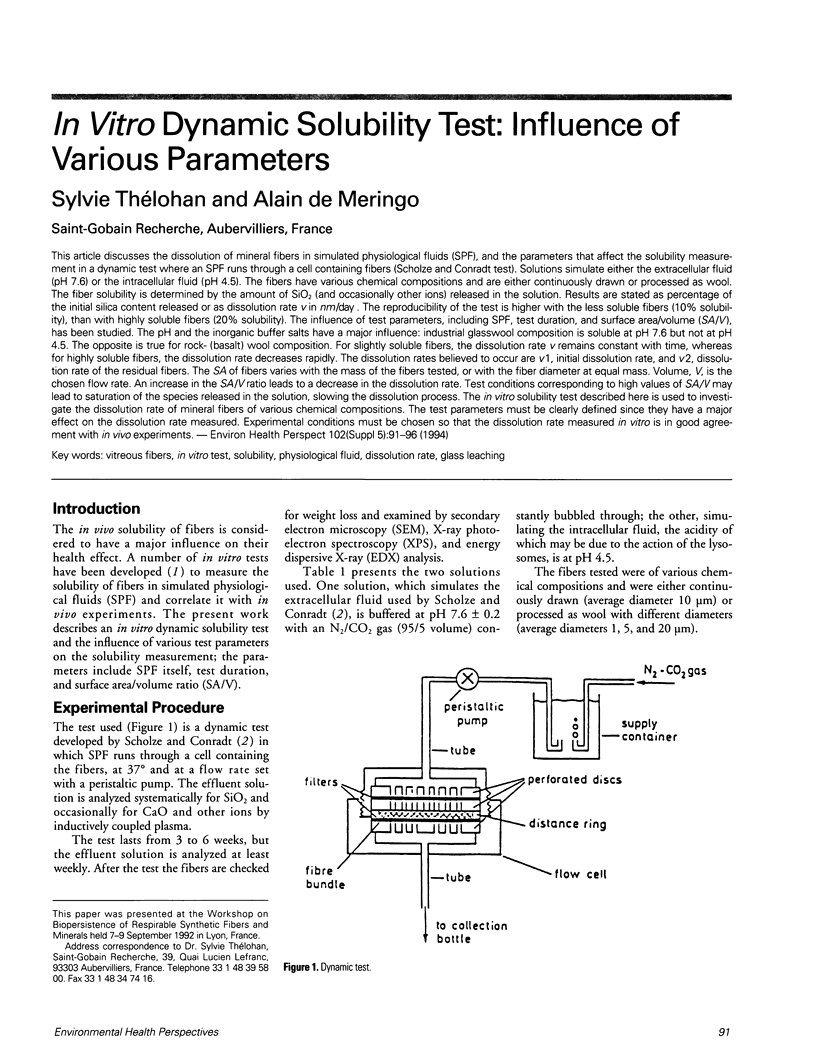
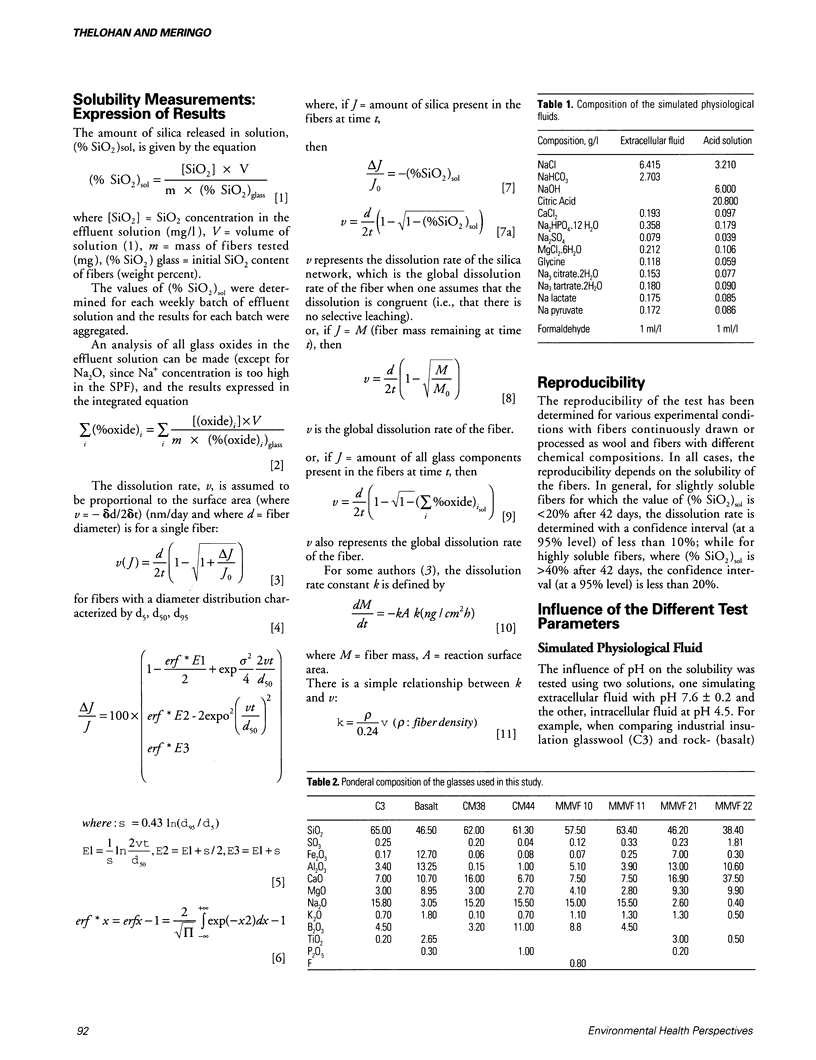
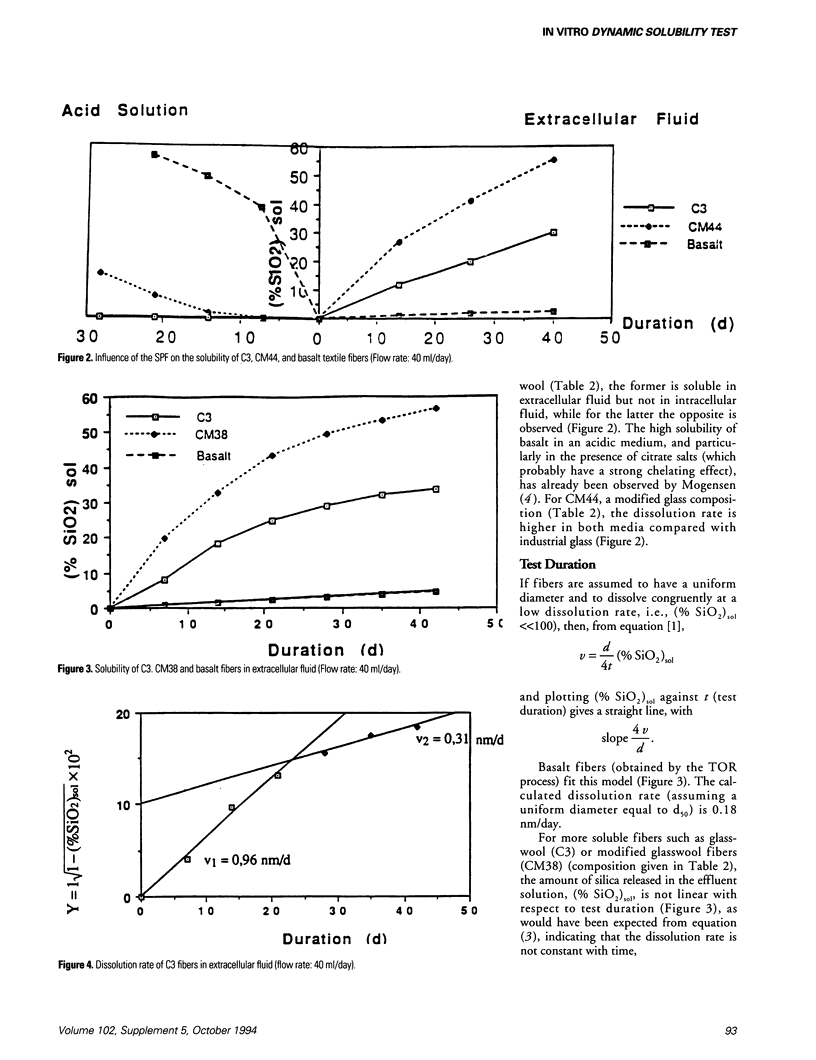
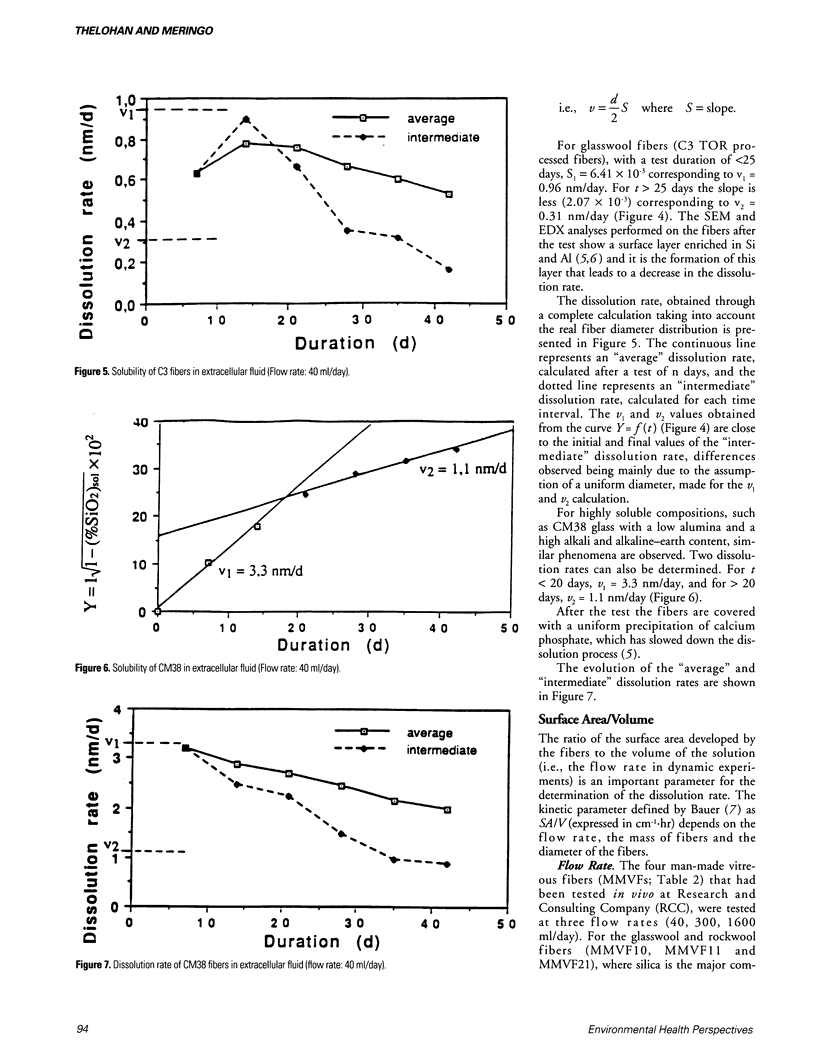
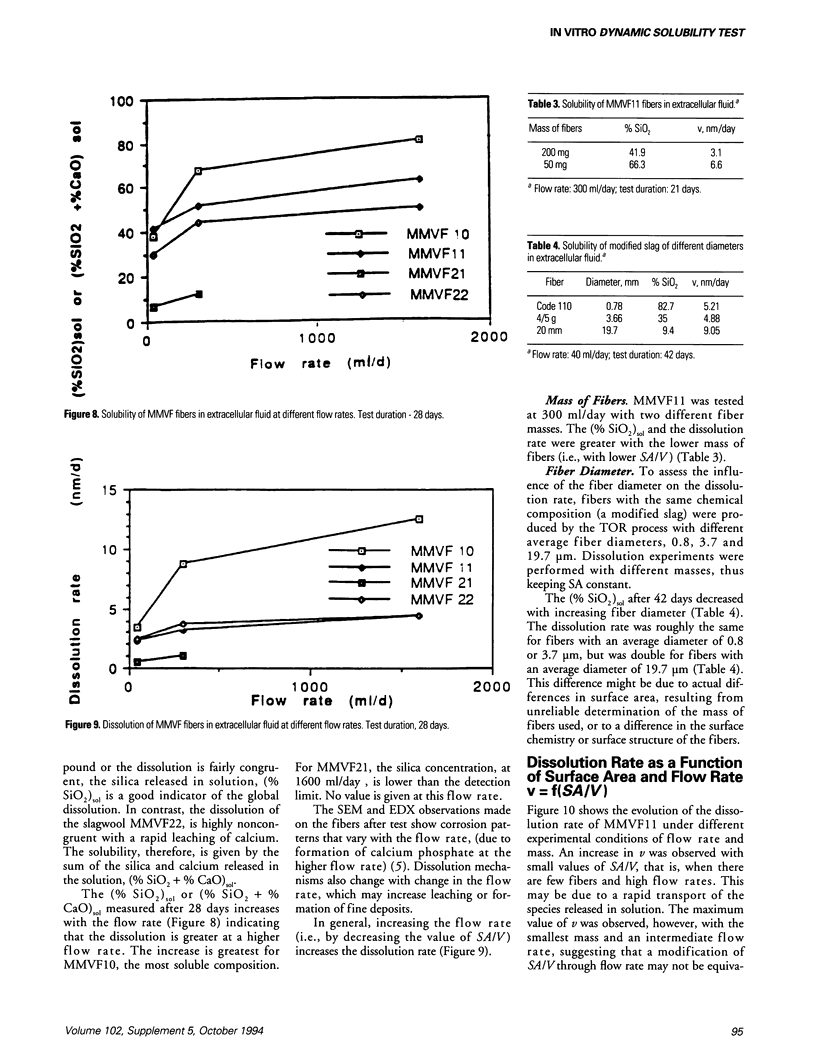
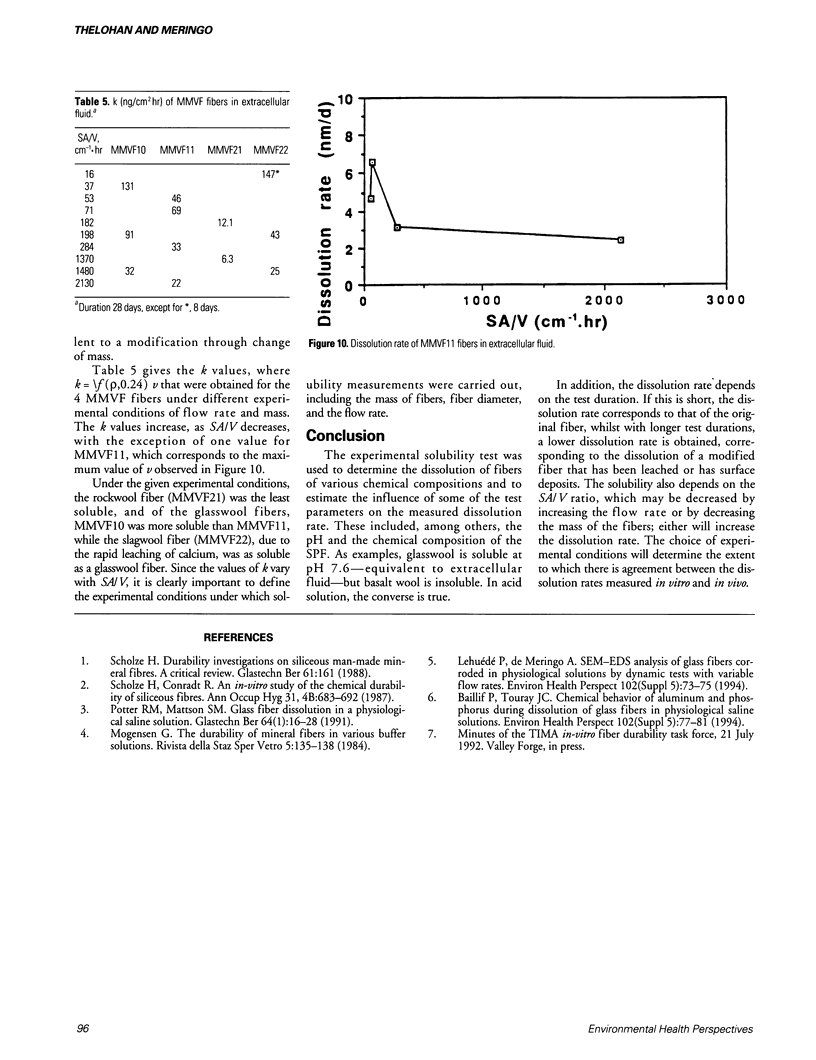
Selected References
These references are in PubMed. This may not be the complete list of references from this article.
- Baillif P., Touray J. C. Chemical behavior of aluminum and phosphorus during dissolution of glass fibers in physiological saline solutions. Environ Health Perspect. 1994 Oct;102 (Suppl 5):77–81. doi: 10.1289/ehp.94102s577. [DOI] [PMC free article] [PubMed] [Google Scholar]
- Lehuédé P., de Meringo A. SEM-EDS analysis of glass fibers corroded in physiological solutions by dynamic tests with variable flow rates. Environ Health Perspect. 1994 Oct;102 (Suppl 5):73–75. doi: 10.1289/ehp.102-1567251. [DOI] [PMC free article] [PubMed] [Google Scholar]


